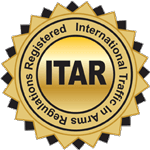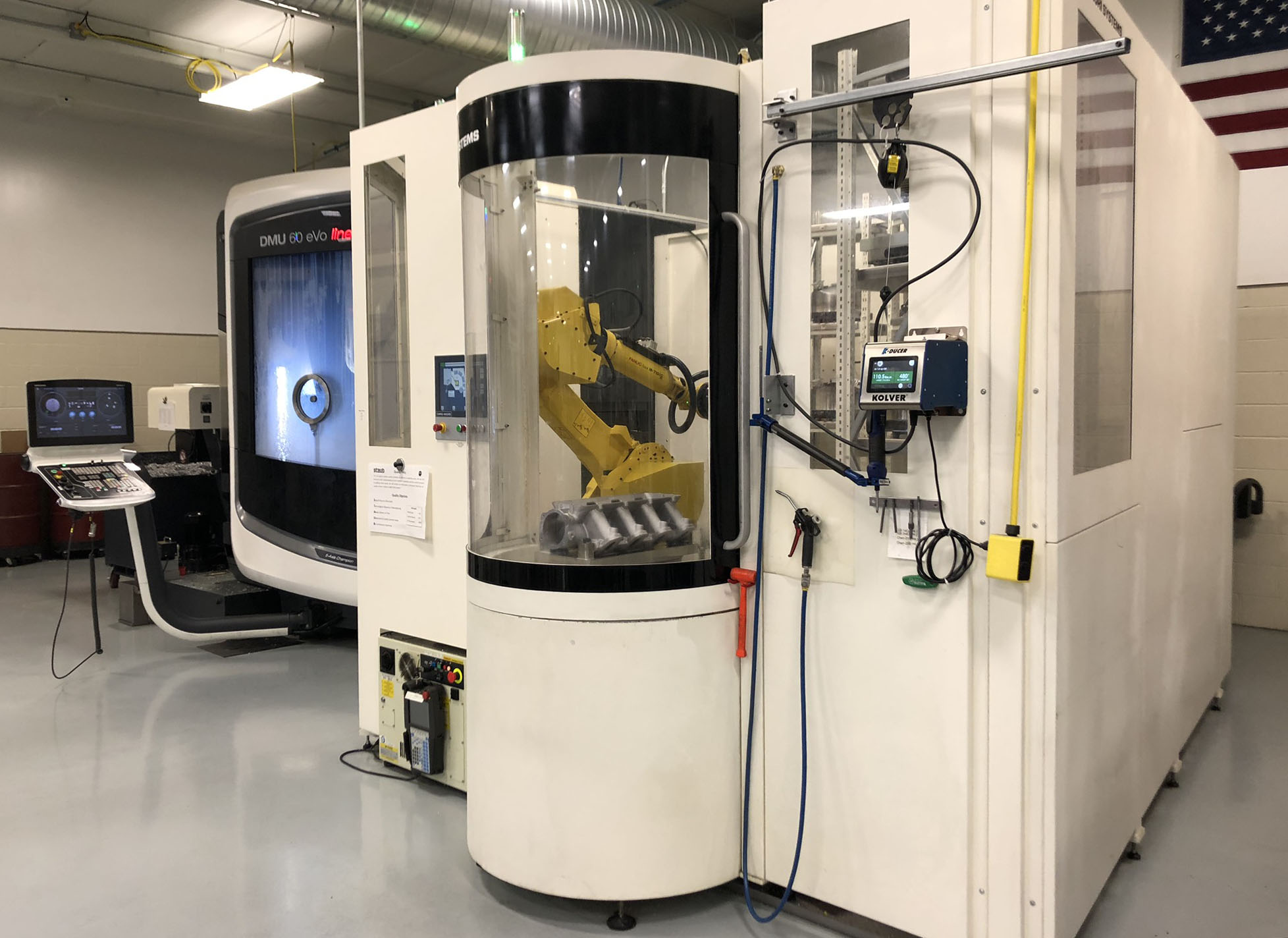Manufacturing parts with tight tolerances requires high-precision machining of components, meaning the fabrication and design are required to meet a certain level of consistent dimensional accuracy, directly influencing part performance. Such high-quality accuracy is required for even the smallest component so that the end product will work as designed. Manufacturers need to ensure the parts they produce meet customer specifications and operate as they should, as the functionality of the components a manufacturer produces directly affects profitability. High-precision machining relies on numerous techniques and tools to produce precision parts quickly and cost-effectively.
Achieving High Precision in Machining
The best tools for producing components with tight tolerances are attached to CNC machines. Machining components to precise dimensions, specifications, and tolerances requires various methods and tools. These techniques, used to make high-precision components, are especially useful when machining aluminum, stainless steel, and titanium alloys, often with tolerances that must come within +/- 0.005 in. (0.13mm). The aerospace, automotive, defense, healthcare, and other industries depend on these methods for making aircraft, electric vehicles, military equipment, medical devices, and other modern machinery.
Conducting high-precision machining work in these industries requires the correct tools and follows strict quality and inspection standards regulated by each industry. It requires processes to be in place to ensure that production is accurate and of the highest caliber, which involves having specific rules for working with equipment. Staub Precision Machine’s Quality Management System (QMS) is designed to help optimize operational and business processes while increasing controls for greater consistency. Using our ISO 9001 certification as a solid foundation for quality and efficiency across all industries, Staub has also gained AS9100 certification to best service any organization in the aircraft, space or defense sectors.
Machining companies want to keep their components as accurate and error-free as possible, so the best machining businesses utilize cutting-edge equipment and keep up with new machining technologies. In addition to state-of-the-art technology and advanced machining equipment, Staub employs a team of trained engineers who are highly experienced in machining operations. From conception to completion, our processes are designed with the customer’s project in mind, and we take great pride in delivering exceptional results every time. Our team will work to ensure that all your needs are met and that the finished product meets or exceeds expectations.
Ready to automate your next job?
VIEW OUR EQUIPMENT7 High Precision Machining Methods
There are a variety of ways in which different machining methods can achieve components with high precision. Machining tools use subtractive manufacturing techniques to bore, cut, drill, grind, mill, and turn workpieces. But high precision machining also depends on the design of a component and the machinery being used to fabricate it to ensure it works properly.
1. Design and Engineering
Machining tools depend on meticulous design and engineering to meet the required specifications for the fabrication of parts with high precision. Design processes utilize three-dimensional models using computer-aided design (CAD) software to develop prototypes using computer-aided manufacturing (CAM) software. The performance of complex components relies on their engineering, determined by factors like what materials are used to manufacture a part and an analysis of the stress it can endure. These considerations, in turn, affect the performance of the end product.
Design for Manufacture and Assembly (DFMA) is another important concept in machining design, helping produce parts with the highest quality at the lowest cost while increasing efficiency throughout the entire production process. DFMA focuses on streamlining manufacturing processes, such as reducing materials waste or optimizing assembly times, to improve output and profitability. Additionally, DFMA helps to reduce the number of tools and machines required for production at each stage, streamlining production to help reduce costs associated with materials handling, energy consumption, and labor costs.
Programmed to operate according to strictly programmed instructions, high-precision machining is achieved by controlling the various tools to shape the raw material into its final form.
2. CNC Milling
CNC milling is a highly accurate machining process that utilizes computer-controlled cutting tools to produce parts with superior precision and repeatability. It is an ideal choice for high-precision projects such as medical devices, aerospace components, and other applications where accuracy is paramount. The parts produced by CNC milling are guaranteed to be completely identical, even with tight tolerances, which is crucial for projects where precise replication and reliability is necessary.
Machines and implements used for milling include:
- 5-axis Machines: This equipment moves across 5 axes, allowing for full machining of 5 sides of a part, as well as 3+2 machining.
- Chamfer mills: These can be attached to a milling machine and cut away small areas from a workpiece’s edge, usually at an angle.
- Duplex milling machines: Working either vertically or horizontally, machines involve two machines facing each other, working as a single unit or separately on the workpiece.
- End mills: Using cutting surfaces called flutes, these come in various styles depending on the application; CNC machines normally utilize end mills that make lateral cuts.
- Horizontal milling machine: Moving along three axes, this robust milling machine has its tools mounted horizontally; it’s used for bigger workpieces and rough cutting.
- Rotary tables: Ordinarily clamped to a vertical milling machine, these attachments help precisely position workpieces and can be positioned vertically or horizontally.
- Universal milling machine: Able to mill from both horizontal and vertical positions, this versatile mill can perform numerous milling operations, including helical milling.
- Vertical knee-type milling machine: Sometimes called turret milling machines, they use rotary tools for cutting away at a workpiece. In contrast, the milling cutters are vertically positioned, and the workpiece is clamped horizontally during milling operations.
- Vertical milling machine: The most common mill type, it features a vertical spindle where milling cutters attach; it’s used for boring and drilling holes, machining grooves, making flat surfaces, and slotting keyways.
3. CNC Turning
A CNC lathe holds the workpiece stationary, mounted on the machine’s main spindle. They can utilize between two to six axes, and sometimes even more, with more axes allowing more intricate machining. Able to rotate along these axes, lathes use this high-precision machining method to fabricate particularly complex components. CNC turning is accomplished by feeding a tool to the workpiece until it removes enough material to achieve the desired geometry.
CNC turning is ideal for reducing production costs through increased production speed and improved accuracy. For example, it can be used to make parts with tight tolerances where the same shape has to be replicated many times, as is often required in machining production runs. It also allows for machining complex shapes with multiple features, such as slots, grooves, and threads. This flexibility makes it easy to design components so that they can be produced more efficiently and cost-effectively.
4. Drilling
This operation involves attaching the workpiece, often via clamps, so it can be rotated to create precise cylindric holes in workpieces. This also requires that the machinist remove excess material efficiently to ensure these holes are drilled with high precision. Machining is often done with a radial arm drill, which works like a vertical milling machine or lathe. Radial arm drills can also use saws attached to small cylinders called collets, which are mounted on the arms and extend to the machine’s base.
5. Grinding
Used after processes with mill machines or lathes, grinding is used to polish rough surfaces on the machined components. After other high-precision machining operations, the process also refines geometry or smooth surface finishes. Using a CNC grinder helps manufacturers achieve even tighter tolerances than conventional milling or turning methods.
6. Cutting
Cutting through metal requires a CNC implement known as a shear, which can cut bar stock, plates, and tubing. Shears can also make “die holes” and “slit grooves” in metal.
7. CNC Electrical Discharge Machines (EDM)
Another high-precision machining method, EDM is widely used for electrically conductive materials like aluminum, brass, copper, stainless, and other types of steel. It uses thermal energy to eliminate unwanted material, using an electrode to cause isolated electrical sparking between it and the workpiece.
High Precision Machining with Staub
Staub Precision Machine has the equipment and proficiency to perform high-precision machining processes for industries that require considerable accuracy, on time, and within your budget. Whether you need precisely machined parts for a prototype or larger production runs, Staub can meet your needs and surpass your expectations.
Our high-precision machining services include:
- Technical 5-axis machining competencies for complex geometries and tighter tolerances.
- CNC milling services that facilitate just-in-time manufacturing.
- CNC turning capabilities with automated technology enable complex parts to be fully completed
- EMD solutions that incorporate sinker, wire, and other EMD services.
- Finishing operations like deburring and plating.
- Hybrid CNC milling/turning capabilities allow for the fabrication of two parts simultaneously.
- Laser cutting machinery for making complex shapes, smoothing edges, and trimming material.
- Rotary transfer machining expertise for efficient large-scale production.
- Waterjet cutting solutions for cutting heat-sensitive materials with pressurized water.
Above all, it’s important for projects that require precise machining to engage with a partner with the expertise to do the job right. To learn more about how our capabilities can facilitate your project, contact the precision machining experts at Staub today.



